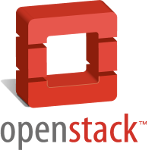 With 20 million lines of open code, 23,756 individual contributors, and about 500 companies involved in 162 countries — including global companies such as Google — OpenStack is the de facto reference for private clouds. Paypal has announced this year a massive migration from VMWare to OpenStack, following the likes of Walmart (100,000 cores of OpenStack virtual machines announced in February), eBay, AT&T, American Express, Sony, Time Warner Cable, BMW, Disney Studio, BestBuy, Comcast, and many others including the Seneca Academic Cloud. Earlier this month, sources said that Apple would join the movement with a massive KVM/OpenStack deployment project.
With 20 million lines of open code, 23,756 individual contributors, and about 500 companies involved in 162 countries — including global companies such as Google — OpenStack is the de facto reference for private clouds. Paypal has announced this year a massive migration from VMWare to OpenStack, following the likes of Walmart (100,000 cores of OpenStack virtual machines announced in February), eBay, AT&T, American Express, Sony, Time Warner Cable, BMW, Disney Studio, BestBuy, Comcast, and many others including the Seneca Academic Cloud. Earlier this month, sources said that Apple would join the movement with a massive KVM/OpenStack deployment project.
Why is all this happening?
Four years ago, after reading several market studies focusing on cloud computing solutions — open source or not — I chose OpenStack for my R&D. A that time, many technologies with different levels of maturity were competing: Eucalyptus (IaaS), CloudStack, oVirt and ProxMox — the latter being more virtualization plus-plus than cloud. OpenStack was the new kid on the block and the most immature. Why did I choose it then?
Two elements were key to my decision:
- My knowledge of the open source ecosystem (I did a PhD thesis on the topic and I’ve been working for the last 11 years in this industry), and
- A thorough analysis of the cloud computing market.
Open Source is the best way to build business standards
For many years, companies have formed consortia as a way to solve complex technical issues. These organizations were complicated, highly political, and it seemed that only big companies would benefit in the end. At the same time, small businesses and start-ups have chosen to build new technologies faster, with the agility granted by open sourcing the code. Google, Facebook, Yahoo, Twitter, Spotify are only some of the most famous. Year after year, open source has become the most accepted way for organizations to collaborate in solving problems.
 How do we recognize before anyone else a successful open source project? That’s the million dollar question! For my part, two elements are important and I found them in the OpenStack community: a strong engineering team with “a dream”, and a business story.
How do we recognize before anyone else a successful open source project? That’s the million dollar question! For my part, two elements are important and I found them in the OpenStack community: a strong engineering team with “a dream”, and a business story.
OpenStack has never been a student project built in a garage but, from the beginning, it was an ambitious business initiative lead by engineers from NASA and Rackspace in partnership with established open source companies. Since day one and the first line of code, the men and women engaged in this project aimed at creating “The” cloud computing solution, the “Linux of the Cloud”… a dream! NASA co-founded this project because they needed Infrastructure as a Service for its large scale needs. Rackspace did it because Amazon Web Services was going to push them out of the market with a new generation of cloud solutions (the business story). After several months of R&D and deployment of this new technology, my gut feeling was confirmed when I saw a guy from my technical team wearing an OpenStack T-shirt. The dream was shared and going strong…
The Cloud computing market needs a standard
 Rapidly, the OpenStack community grew with the addition of major players like Dell, Cisco, IBM, Red Hat, and others. Why? Cloud computing actors use to commit themselves: “Cloud solutions will help you to perform”. The reality is not that simple, since public clouds can’t satisfy everyone’s needs — particularly when security and privacy are major concerns only addressed with a true private cloud solution.
Rapidly, the OpenStack community grew with the addition of major players like Dell, Cisco, IBM, Red Hat, and others. Why? Cloud computing actors use to commit themselves: “Cloud solutions will help you to perform”. The reality is not that simple, since public clouds can’t satisfy everyone’s needs — particularly when security and privacy are major concerns only addressed with a true private cloud solution.
That’s where OpenStack comes in.
You can summarize OpenStack in a single acronym — IaaS — which includes the same disruptive approach as Amazon Web Services (AWS) and its standard API. To make an analogy with the smartphone industry, OpenStack is the Android of cloud computing, and AWS, its iOS.
- Both Amazon and Apple develop their global solutions on private technology with a high level of services.
- Both are industry leaders.
- Facing them, Android and OpenStack are open technologies designed to run on any hardware platform, whilst offering standard APIs to facilitate their operations.
- In these two market, the “open source” outsiders have earned the most important part of the market with the same open strategy.
 That is the key behind the success of OpenStack:
That is the key behind the success of OpenStack:
- A standard and shareable IaaS solution
- in a highly competitive business ecosystem
- with an open source Apache license which allows to run the software inside any proprietary solution or existing infrastructure.
No other project in the IT industry have had the same impact as OpenStack, which is leveraging the best recent development practices (continuous integration, DevOps…), while being carried by all the market actors including hardware, services and software companies. Only an open source project can achieve that.
Keep it simple, be safe
To conclude this post, OpenStack is now the de facto cloud computing standard. Obviously, there are various ways to use it depending on your business case. Hosting services and big private cloud providers are the most intensive users of OpenStack and they leverage the full power of all its components. In many cases, however, organizations will only need a simple version of it and, as I use to say, “With OpenStack, keep it simple, be safe.”



 This tursday, Jonathan will speak at the
This tursday, Jonathan will speak at the  With 20 million lines of open code, 23,756 individual contributors, and about
With 20 million lines of open code, 23,756 individual contributors, and about  How do we recognize before anyone else a successful open source project? That’s the million dollar question! For my part, two elements are important and I found them in the OpenStack community: a strong engineering team with “a dream”, and a business story.
How do we recognize before anyone else a successful open source project? That’s the million dollar question! For my part, two elements are important and I found them in the OpenStack community: a strong engineering team with “a dream”, and a business story. Rapidly, the OpenStack community grew with the addition of major players like Dell, Cisco, IBM, Red Hat, and others. Why? Cloud computing actors use to commit themselves: “Cloud solutions will help you to perform”. The reality is not that simple, since public clouds can’t satisfy everyone’s needs — particularly when security and privacy are major concerns only addressed with a true private cloud solution.
Rapidly, the OpenStack community grew with the addition of major players like Dell, Cisco, IBM, Red Hat, and others. Why? Cloud computing actors use to commit themselves: “Cloud solutions will help you to perform”. The reality is not that simple, since public clouds can’t satisfy everyone’s needs — particularly when security and privacy are major concerns only addressed with a true private cloud solution. That is the key behind the success of OpenStack:
That is the key behind the success of OpenStack:



[…] Our VP Business Development, Infrastructure and Cloud, Jonathan Le Lous, will talk about the rise of OpenStack for private clouds in Canada. […]